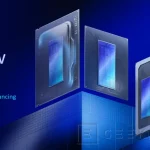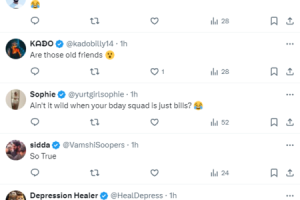() –Elon Musk and Tesla promised this Thursday night a moment that would change the history of the company. It remains to be seen if they will actually follow through.
For the past decade, the electric vehicle maker’s CEO has promised that Tesla’s true self-driving cars were just around the corner. The latest promises will come when Tesla hosts an event on the grounds of Warner Bros. studios in California to reveal its self-driving “robotaxis” plans.
“I think it’s one of the biggest events Tesla has ever held,” said Dan Ives, an analyst at Wedbush Securities and a Tesla bull. “I think it will be seen in five or ten years as what it was for Apple when the iPhone was launched.”
Tesla robotaxis would provide rides to passengers without a driver in the car. Fully self-driving vehicles would compete with ride-hailing services such as Uber and Lyft, and Tesla would also test programs with driverless vehicles from Google’s Waymo and General Motors’ Cruise units.
Part of this Thursday’s program could be the introduction of a model that Tesla would build specifically for the robotaxi fleet, a “Cybercab” as Musk has referred to it.
But details are also expected about the company’s vehicle rental service, which would use both vehicles owned by Tesla and cars owned by Tesla customers who want to rent them when they are not using them, something like an Airbnb for their vehicles. Tesla would take a portion of the proceeds and the rest of the money would go to the vehicle owner.
But Tesla has been promising for five years that such a program is near. And even if the technology is as advanced as Musk likes to claim, getting regulatory approval to operate could be difficult. Accidents involving self-driving vehicles could cause regulators to halt operations, even after they have been approved. It is a risk that services that use human drivers do not face.
GM’s Cruise unit had its permits to operate driverless vehicles suspended in California by the state Department of Motor Vehicles after an accident in which a pedestrian who had already been hit by a driverless car was dragged under a Cruise vehicle for 6 meters, and was seriously injured.
Musk and his supporters insist this will change the basic economics of how people get from point A to point B, which in turn will drive Tesla’s stock to a valuation that would dwarf the market value of any current company. . Musk’s promises about self-driving cars have boosted Tesla’s stock for years.
They predict that not only could Tesla make more money selling rides than selling cars, but it would also increase demand from buyers who would recoup the purchase price by leasing their cars for rides.
Tesla and Musk have promised many, many times before about the capabilities of autonomous vehicles and when true self-driving would be available. So far, Tesla has failed to deliver on those promises. And beyond the issue of technology, there are significant regulatory hurdles that will need to be overcome.
Tesla has long offered what it calls Full Self-Driving, or FSD, as an option on its cars, currently priced at $8,000. But despite its name, Tesla claims that drivers need to remain seated in the driver’s seat, ready to take control of the vehicle, even when it is in FSD mode.
At a meeting with investors in July, Musk said he hoped to have “unattended driving possibly by the end of this year,” adding, “I would be surprised if we couldn’t do it next year.” But he also admitted that “obviously my predictions on this have been overly optimistic in the past.”
In fact, Tesla has been a year away from true autonomous driving for many years, if we listen to Musk’s statements in the past.
“I am the boy who cried FSD. But I think we will be better than humans by the end of this year,” he said on a call with investors in July 2023, before adding: “I have been wrong in the past. “Maybe I’m wrong this time.”
Although Tesla and Musk have insisted that FSD has met the goal of being safer than human drivers, people outside the company who have tested the service have found that the vehicles are susceptible to crashing if not for drivers taking the check frequently. An independent testing service, AMCI Testing, found that drivers needed to take control every 20km driven, on average.
“There would be three accidents every hour. That’s thousands of times worse than competing technology,” said Gordon Johnson, an analyst who has long criticized Tesla and Musk. He predicts that this Thursday’s Robotaxi launch “is going to be a massive disappointment for investors.”
Even some of those who are optimistic about Tesla’s ability to deliver on its promises think the service is at best three or five years away.
“Disconnections reach 3% of the kilometers traveled. Although 97% seems low, it’s not even low,” says Gene Munster, managing partner of Deepwater Asset Management, about the number of times a human driver has to take control. “It has to be well above 99%. And going from 95 or 97% to 99% is really difficult. And then there’s the question of how many 9s regulators will want to see. Is it 99.9%, 99.999%?”
“I think it will take two years to get the technology right,” Munster says. “And two to three more years to obtain the necessary regulatory approval.”
Although Munster is optimistic about Tesla’s ability to succeed in the future, he suspects the development could leave investors unimpressed.
“They’ve been talking about it for years,” he said. “The biggest question is the timing. If it is more than three months, investors will take it with caution.”
Even an optimist like Ives said it’s crucial for Musk to break down the skepticism that abounds, given his past promises.
“This is a bifurcation moment for Musk and Tesla,” he said. “You either walk out of the event as a jaw-dropping moment, or you walk out with a shrug.”



![[Img #74070]](https://thelatestnews.world/wp-content/uploads/2024/10/The-key-role-of-Brazilian-students-in-international-scientific-collaborations-150x150.jpg)





![[Img #74070]](https://thelatestnews.world/wp-content/uploads/2024/10/The-key-role-of-Brazilian-students-in-international-scientific-collaborations-300x200.jpg)

Add Comment